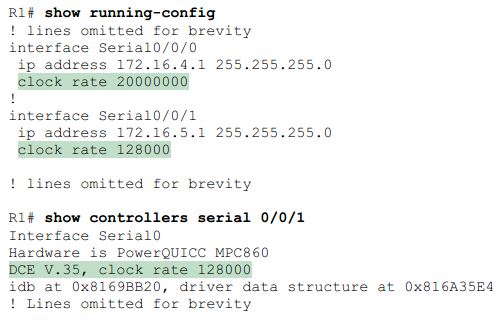Operating Cisco Router

consider the hardware on the ends of the serial link, in particular where the channel service unit/data service unit (CSU/DSU) hardware resides on each end of the serial link. It sits either outside the router as a separate device (as shown on the left) or integrated into the router’s serial interface hardware (as shown on the right). Most new installations today include the CSU/DSU in the router’s serial interface.
ISR:Integrated Services Routers
CLI:show ip interface brief
Show interface serial 0/0/0




WAN links can run at a wide variety of speeds. To deal with the wide range of speeds, routers physically slave themselves to the speed as dictated by the CSU/DSU through a process called clocking. As a result, routers can use serial links without the need for additional configuration or autonegotiation to sense the serial link’s speed. The CSU/DSU knows the speed, the CSU/DSU sends clock pulses over the cable to the router, and the router reacts to the clocking signal.

The clock rate command is not needed on real serial links, because the CSU/DSU provides the clocking. Without any real CSU/DSUs on the link, the router with the DCE cable must supply that clocking function, and the clock rate command tells the router to provide it.


Router Auxiliary(Aux) Port
While both routers and switches have a console port to allow administrative access, routers have an extra physical port called an auxiliary (Aux) port. The Aux port typically serves as a means to make a phone call to connect into the router to issue commands from the CLI.
The Aux port works like the console line, except that the Aux port is typically connected through a cable to an external analog modem, which in turn connects to a phone line. Then, the engineer uses a PC, terminal emulator, and modem to call the remote router. After being connected, the engineer can use the terminal emulator to access the router CLI, starting in user mode as usual.
Aux ports can be configured beginning with the line aux 0 command to reach aux line configuration mode.
PS:
one more command, the show version command, identifies a large number of important base features about a router. It does list the IOS version currently used by the router. However, it lists other important details as well: how long the router has been running, why the IOS was last reloaded, what file was used to load the IOS, and what interfaces are installed in the router. It also lists details about the amounts of NVRAM, RAM, and flash memory installed.